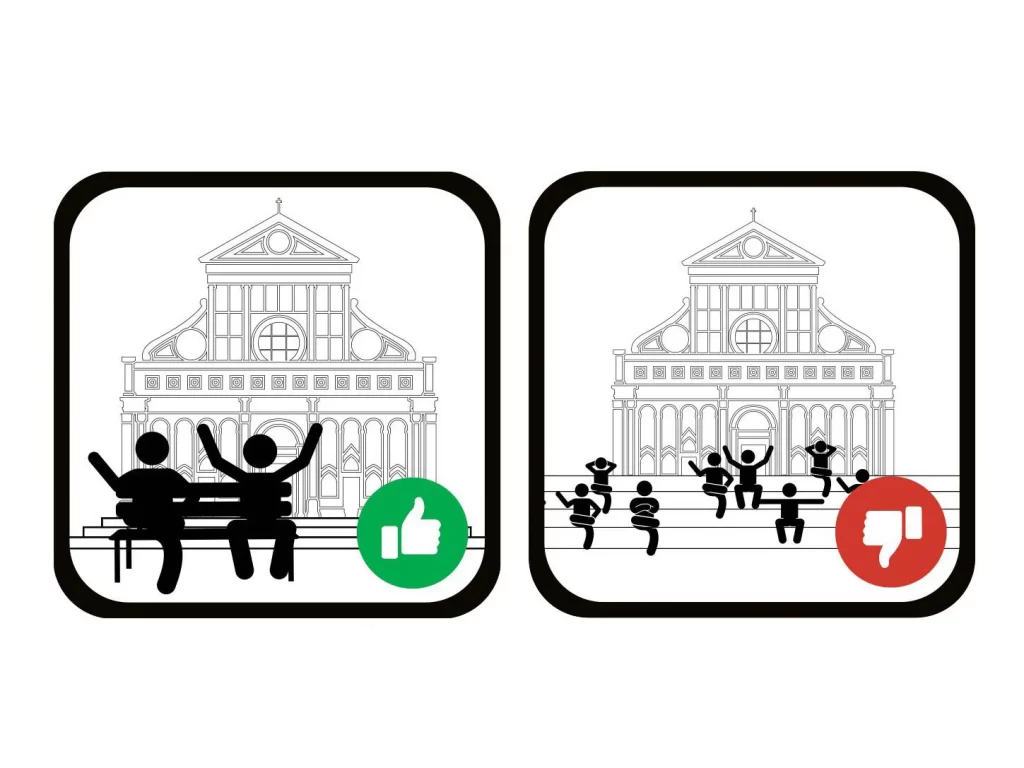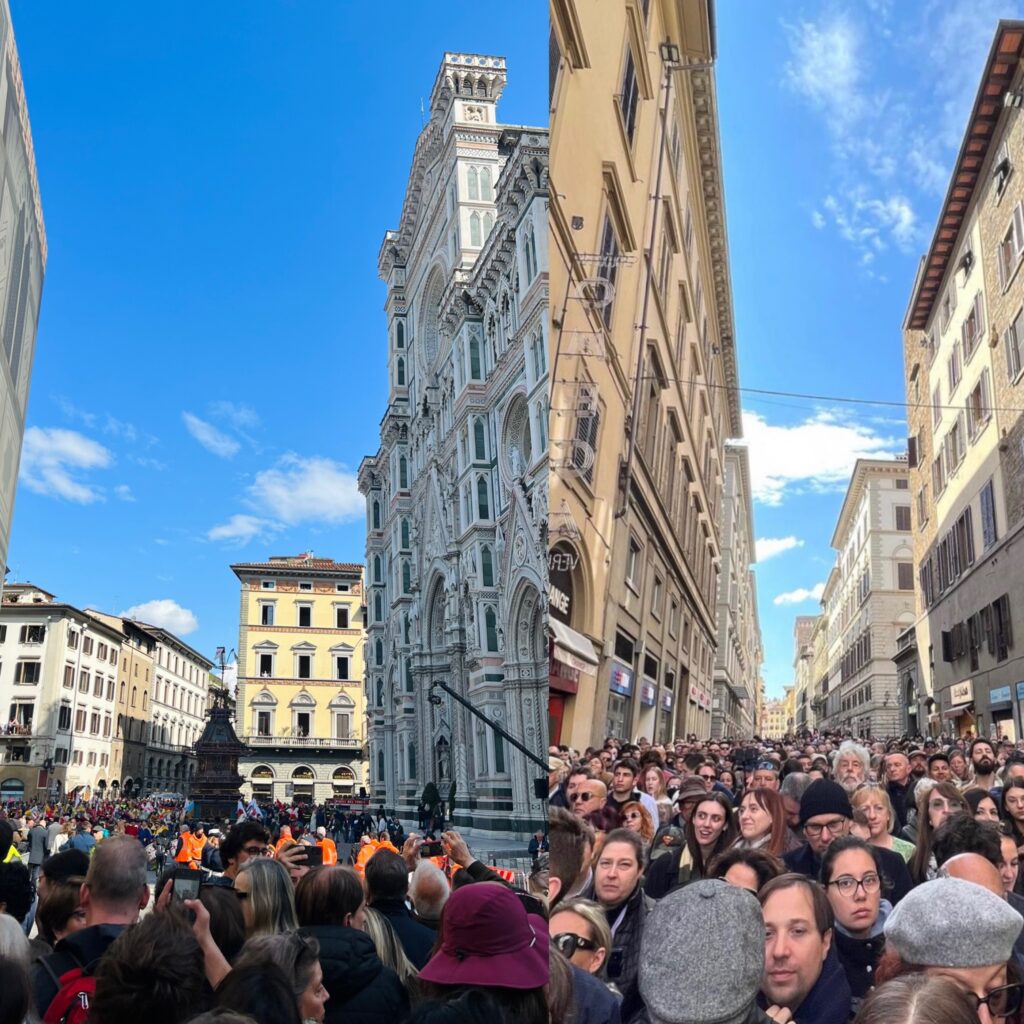By Catherine Vogt
Florence, Italy: home to the birth of the Renaissance with the Cathedral of Santa Maria del Fiore, Michaleganelo’s Statue of David, and Boticelli’s The Birth of Venus. Moreover, being located in the center of Tuscany, Florence boasts a menu of delicious cuisines, such as pappardelle cinghiale, bistecca alla fiorentina, and ribollita. However, with tremendous works of art along with exquisite food comes an extraordinary number of tourists flooding the streets of the Tuscan capital.
A crowded Palazzo Vecchio. Photo courtesy of Marcus Lindstorm of Getty Images.
Since the easing of COVID-19 travel restrictions, Florence has experienced a sharp increase in tourists. Just in the summer of 2022, Florence saw 198 million tourists stay overnight in the city, a 15.5% growth from the previous summer. The vast majority of tourists come from the United States, Germany, Spain, and France who strengthen Florence’s economy bringing in an average of €3 billion a year.
Carlo Francini, the head of the United Nations Educational, Scientific and Cultural Organization (UNESCO) office of the City of Florence, noted that because Florence is a UNESCO World Heritage site, the city must be open to all. In the wake of increasing numbers of foreigners visiting the city though, the city issued guidelines on how to properly behave, such as not lying on church steps, littering, and respecting local vendors. Despite the very public guidelines throughout the city, some tourists are still disrespectful. For example, a tourist recently damaged the 16th century Fountain of Neptune while trying to take a selfie with the sculpture.
Guideline image on how to behave in front of churches. Courtesy of Enjoy Respect Firenze.
In addition to issuing behavior guidelines, Florence has taken further steps to combat unruly tourists. Currently, Florence has 11,000 short-term private rental properties with 8,000 of them within the historic center, which is a UNESCO World Heritage Site. However, this past June, Dario Nardella, the mayor of Florence, announced that the city had banned future Airbnbs and short-term rentals. The Italian city is also offering tax incentives for Airbnb and short-term rentals owners who convert their properties into long-term rentals. Florence’s plan not only seeks to prevent overcrowding from tourism, but it also works to address the affordable housing shortage in the city by providing more housing options for students and locals.
Even though Florence is a tourist hotspot, the city is home to approximately 710,944 locals. Most locals live in more residential neighborhoods typically 30 minutes outside the centro storico (historical center), which is significantly cheaper and less crowded. When I studied abroad in Florence, my program organized dinners where my fellow students and I could dine with local Florentine families. During my meal with a family of four, they expressed frustration when it came to overcrowding during Florence’s busier periods, specifically around Easter and between May and August. The family did acknowledge the economic benefit of tourists as the wife had been working as tour guide for over 20 years and the husband worked in the real estate industry.
The Piazza del Duomo (left) and Via dei Calzaiuoli (right) on Easter. Photo Courtesy of Catherine Vogt.
While I had a positive experience with the local Florentine family, some of my peers did not. One of my roommates was very confused in the grocery store and asked a local for help. The Florentine local responded with a harsh “Americani!” followed by Italian words my roommate did not understand, but they were definitely not kind.
There is no uniform sentiment on tourists from a local Florentine’s perspective, but it is clear that tourism plays a crucial role in the day-to-day operations of the Italian city. It is hard to imagine a Florence that does not attract tourists; however, with stricter guidelines and restrictions to prevent overcrowding and ill-mannered tourists, it is possible to give the city of Florence back to the local Florentines.
Bibliography
Destination Florence. “Tourism in Florence: tour operators give their take.” October 12, 2022. https://www.theflorentine.net/2022/10/12/tourism-florence-tour-operators/.
“Florence Tourism Statistics 2023.” GoWithGuide. January 27, 2023. https://gowithguide.com/blog/florence-tourism-statistics-2023-5219.
Korey, Alexandra. “Italy vs. the Tourists.” The Florentine. September 12, 2017. https://www.theflorentine.net/2017/09/12/italy-tourists/.
Parker, Benjamin. “Italian city bans Airbnbs in its historic centre.” The Independent. June 2, 2023. https://www.independent.co.uk/travel/news-and-advice/florence-italy-airbnb-rentals-ban-b2350210.html.
Zitser, Joshua. “A man damaged a 16th-century Florence fountain while climbing it for a selfie, the latest example of tourists wrecking things.” Business Insider. September 5, 2023. https://www.insider.com/german-tourist-damages-florence-italy-monument-fountain-neptune-taking-selfie-2023-9.



